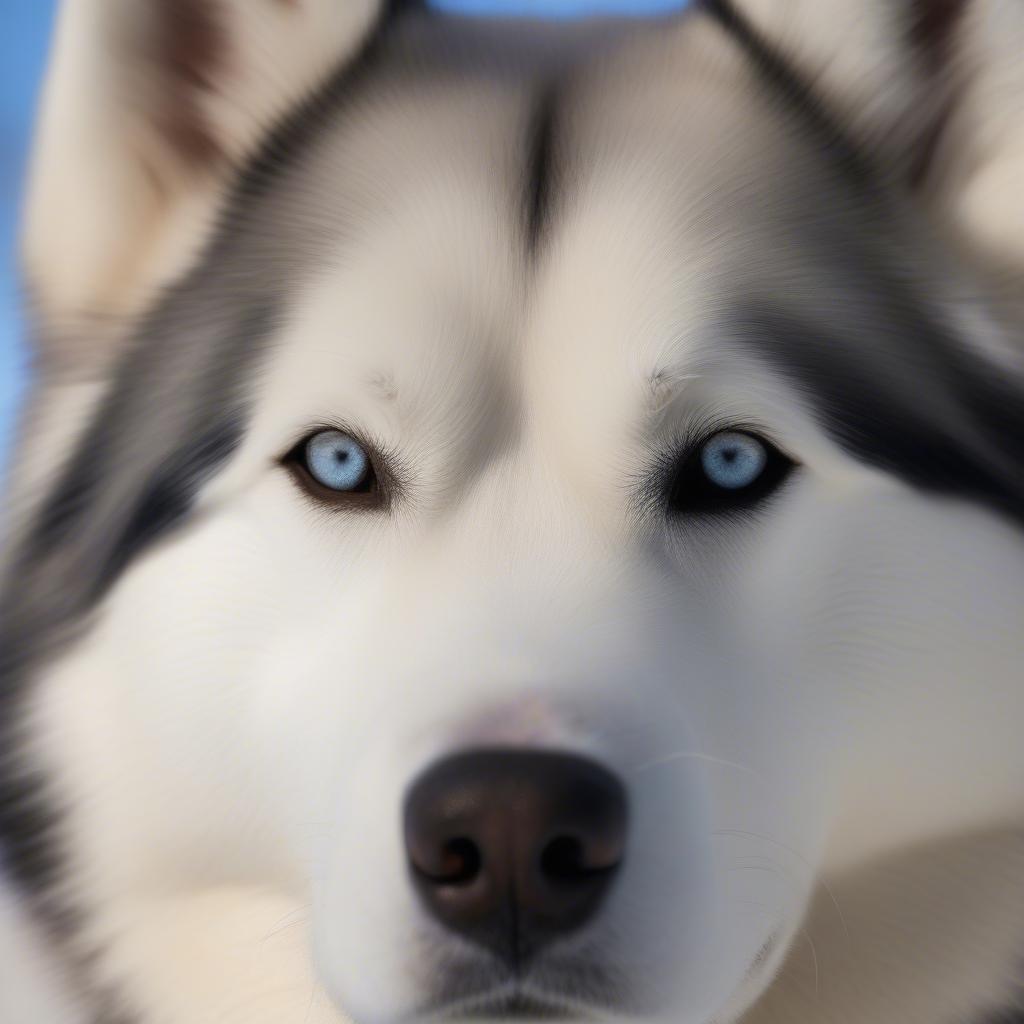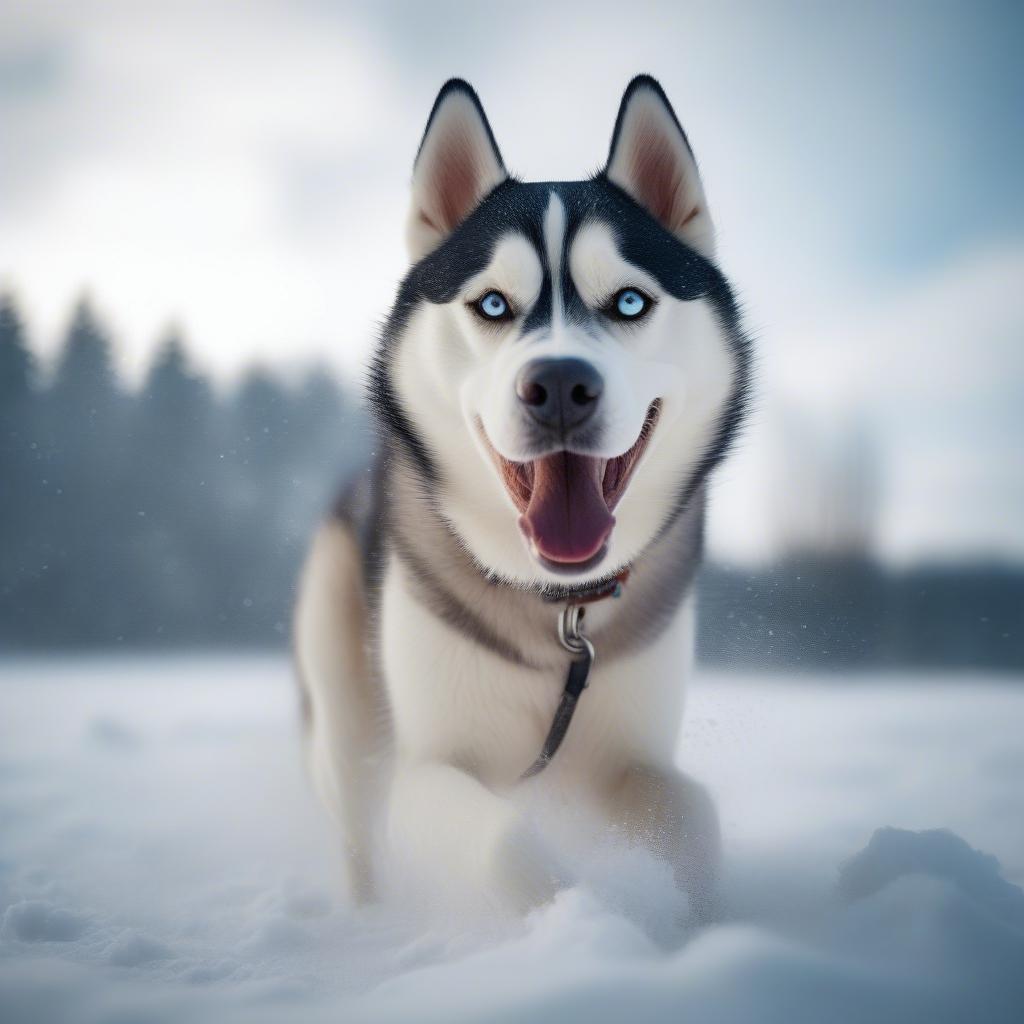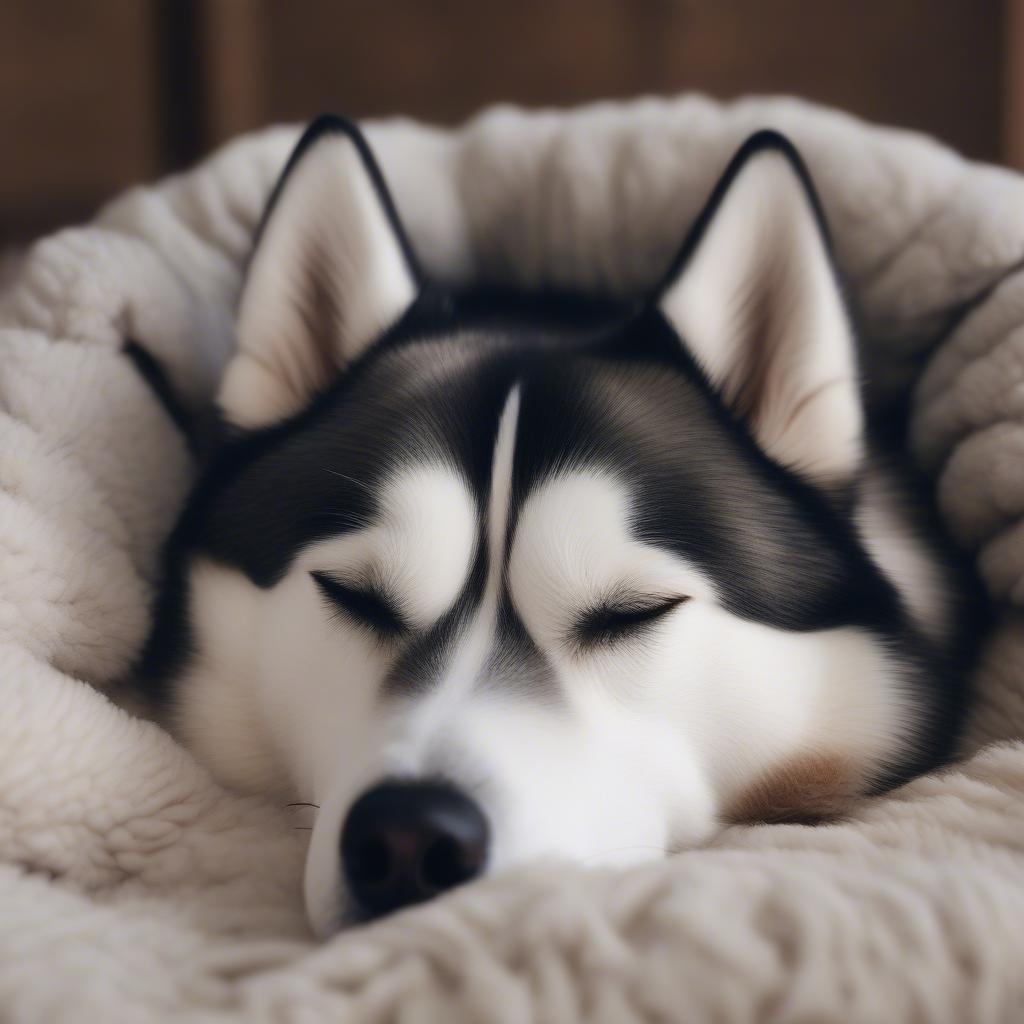Do Huskies Love The Cold? It’s a common assumption that these majestic, wolf-like dogs thrive in freezing temperatures. While there’s truth to their cold tolerance, the reality is more nuanced than simply assuming they adore sub-zero weather. This article will delve into the fascinating world of husky thermoregulation, exploring their adaptations, ideal temperature ranges, and how to ensure your husky stays comfortable and safe in all weather conditions.
Built for the Cold: Husky Adaptations
Huskies, originating from Siberia, have evolved several remarkable adaptations that allow them to withstand frigid climates. Their double coat, a defining characteristic, provides exceptional insulation. A dense undercoat traps warm air close to the body, while the longer outer coat acts as a water-resistant barrier. This double layer of protection helps them retain body heat even in sub-zero temperatures.
Beyond their fur, huskies have other physical attributes that contribute to their cold-weather resilience. Their almond-shaped eyes protect them from snow glare and harsh winds. Their compact, muscular build minimizes surface area, reducing heat loss. Even their paw pads are designed for cold weather, with thick fur and tough skin that provide insulation and traction on ice and snow.
 Husky Double Coat Insulation
Husky Double Coat Insulation
The Ideal Temperature for a Husky: It’s Not as Cold as You Think
While huskies are undoubtedly built for the cold, they don’t necessarily love extreme freezing temperatures all the time. Their ideal temperature range falls between 20°F and 50°F (-6°C and 10°C). Believe it or not, they can overheat in warmer climates, especially during strenuous activity. Their thick coats, designed to trap heat, can become a burden in hot weather.
So, do huskies get cold? Yes, they can, particularly if exposed to prolonged periods of extreme cold, wet conditions, or strong winds. Puppies and senior huskies are especially vulnerable to the cold and require extra care in winter.
 Husky Enjoying Moderate Snow
Husky Enjoying Moderate Snow
Keeping Your Husky Comfortable in All Temperatures
Understanding your husky’s temperature tolerance is crucial for their well-being. In winter, provide adequate shelter from wind and moisture. Consider using a dog coat for extra warmth during walks in extreme cold. In summer, ensure they have access to shade and plenty of fresh water. Avoid exercising them during the hottest parts of the day.
“Huskies are remarkably adaptable animals,” says Dr. Emily Carter, a veterinary specialist in canine thermoregulation. “But even with their natural adaptations, responsible owners must take precautions to ensure their comfort and safety in all weather conditions.”
Do Huskies Get Cold at Night?
Yes, huskies can get cold at night, especially in extreme temperatures or if they don’t have proper shelter. Providing a warm, dry, and draft-free sleeping area is essential for your husky’s comfort and well-being.
 Husky Sleeping Comfortably in a Dog Bed
Husky Sleeping Comfortably in a Dog Bed
Conclusion
Do huskies love the cold? The answer is complex. They are undeniably adapted for colder climates, but their ideal temperature range is more moderate than most people assume. By understanding their needs and providing appropriate care, you can ensure your husky thrives in any weather. Remember to always prioritize their comfort and safety, and consult with your veterinarian if you have any concerns.
FAQ
- What is the ideal temperature for a husky? Between 20°F and 50°F (-6°C and 10°C).
- Do huskies need winter coats? They can benefit from a coat in extreme cold, especially puppies and seniors.
- Can huskies overheat? Yes, especially in hot weather and during strenuous activity.
- How can I keep my husky cool in summer? Provide shade, plenty of fresh water, and avoid exercising them during the hottest parts of the day.
- Do huskies need a special diet in winter? Consult your vet, but they may benefit from slightly increased caloric intake in colder months.
- Can huskies live in warm climates? Yes, with proper care and management.
- Do huskies shed? Yes, they have a double coat and shed seasonally, particularly in spring and fall.
Common Husky Cold Weather Scenarios
- Shivering: This is a clear sign your husky is cold. Bring them inside immediately and provide warmth.
- Curling up tightly: Huskies naturally curl up to conserve heat. If they seem excessively curled up, they may be cold.
- Lifting paws frequently: This indicates discomfort from cold ground or snow. Consider using booties for paw protection.
Further Reading
- Caring for your Husky in Summer
- Understanding Husky Coat Care
- Choosing the Right Winter Gear for your Husky
Need more help? Contact us at Email: contact@daiduongtranhba.com, address: Michigan Ave, Suite 3100, Chicago, IL 60611, USA. We have a 24/7 customer support team.

